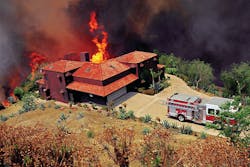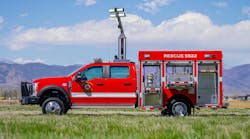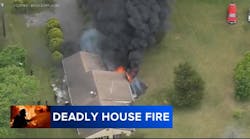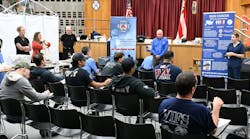The West, TX, fertilizer plant explosion and the exploding of two bombs near the finish line of the Boston Marathon were just two recent major incidents. In California, two large wildfires occurring so early in the year caused great concern to West Coast firefighters as to what lies ahead in the coming wildland fire season.
Twenty to 30 firefighters were on the scene of the Boston incident on Boylston Street immediately. Numerous spectators were injured so severely by the blasts that more than a dozen had to have limbs amputated at the scene and several others had the same procedure at the hospital. Numerous medical personnel were on hand standing by. The injured were removed in about 15 minutes. Many of the injured may still lose limbs because of the horrific injuries they received. Following the initial blasts, the Boston Fire Department was kept quite busy responding to several dozen reports of suspicious packages.
According to the U.S. Fire Administration (USFA), firefighters and other emergency responders were operating at the scene of a fire at the West Fertilizer Co. in Texas. Initial reports indicate that as the situation on the fireground worsened, the fire chief ordered all personnel to evacuate the property. Shortly thereafter, a massive explosion occurred, damaging or destroying a portion of the City of West. Many people were injured or killed as a result of the explosion, including five firefighters from the West Volunteer Fire Department.
Due to the timely efforts of first responders and other volunteers working in the face of pending catastrophe to evacuate nearby occupancies plant, many other lives were saved. Several other emergency responders were also killed in the incident. The investigation into the cause of the fire, explosion, and resulting fatalities continues by local, state and federal authorities.
From fire photographer Keith Cullom on the scene in California, weather forecasts from the National Weather Service indicated temperatures into the upper 90s, humidity down to single digits (3%) and strong Santa Ana winds of 40 mph, gusting to 47 mph – and this was just for the first day of May. As all of Southern California had been experiencing a drought, with rainfall inches below normal, fire agencies across the state were racing to put staffing and resources into place for a fire season that was months ahead of the normal calendar. More than 2,000 firefighters from 247 engines and other resources protected more than 4,000 structures, which included California State University-Channel Islands (CSUCI) and Point Mugu Naval Air Station, in addition to homes in several communities. Firefighters from as far away as Nevada contained the fire after it burned burning 24,250 acres, but destroyed only 10 out-buildings and limited damage to 12 other buildings and resulted in minor injuries to eight firefighters. The efforts of firefighters throughout the West will certainly be put to the test throughout the rest of the year as fire conditions will certainly become more extreme as the warmer summer and fall months approach and ground fuels become dryer.
On April 24, 2013, an eight-story commercial building, collapsed in Savar, a suburb of the capital of Bangladesh. At least 1,127 people were killed and about 2,500 people injured. As of mid-May, many people were still missing. At least 2,500 people were rescued from the building alive. Seventeen days after the collapse, a woman was pulled alive from the wreckage. It is considered to be the deadliest garment-factory accident in history, as well as the deadliest structural failure in modern human history (excluding the collapse of the World Trade Center). The building contained clothing factories, a bank, apartments, and several other shops. The shops and the bank on the lower floors immediately closed after cracks were discovered in the building. Warnings to avoid using the building after cracks appeared the day before had been ignored. Garment workers were ordered to return the following day and the building collapsed during the morning rush-hour.
Shortly, we will be in Baltimore hosting the Firehouse Expo. A number of new classes will bring the latest in fire service issues to your attention. Topics include “Community-Based Paramedics,” “UL Testing,” “ISO and the New Rating Schedule,” “What Chiefs Need to Know to Be Successful,” “Making Yourself Hard to Kill,” “The Effects of Hurricane Sandy” and a selection of classes on engine and truck company operations, leadership, strategy and tactics, EMS and a whole lot more. See Firehouse.com for the latest.






